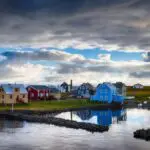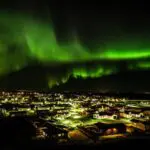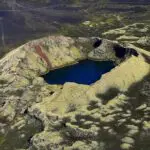The Icelandic National Costume is rooted in centuries of history. From paintings and manuscripts to fragments of surviving clothing, we can catch glimpses of the attire worn in the 16th to 19th centuries. In this blog post, we explore the evolution of traditional Icelandic clothing and the visionary artist who played a pivotal role in reshaping the national costume.
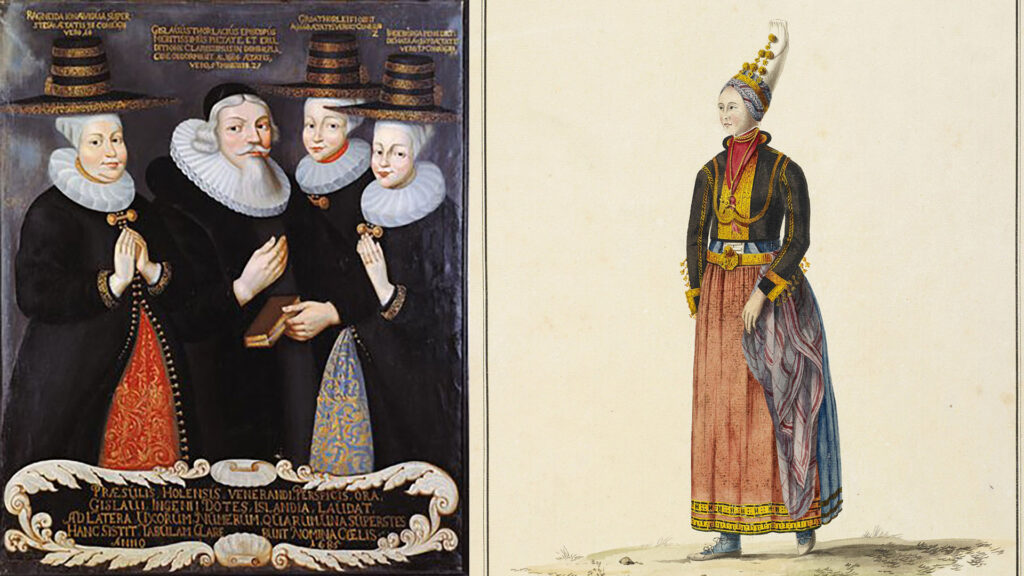
In the 16th and 17th centuries, women in Iceland adorned themselves in the faldbúningur. This national costume evolved over time, experiencing subtle changes until its gradual disappearance around 1850. During this era, some Icelandic women began adopting fashion trends similar to those in other countries. The upphlutur, once an undergarment and working attire within the faldbúningur, eventually became a separate costume, reflecting the shifting fashion landscape of the early 20th century.
Skautbúningur and Kyrtill – 19th-century creations
Sigurður Guðmundsson, also known as “the Painter,” played a significant role in promoting national consciousness and pride in Iceland when he designed the formal skautbúningur and later kyrtill costumes between 1858 and 1860. He wanted to encourage Icelandic women to embrace national costumes for special occasions.
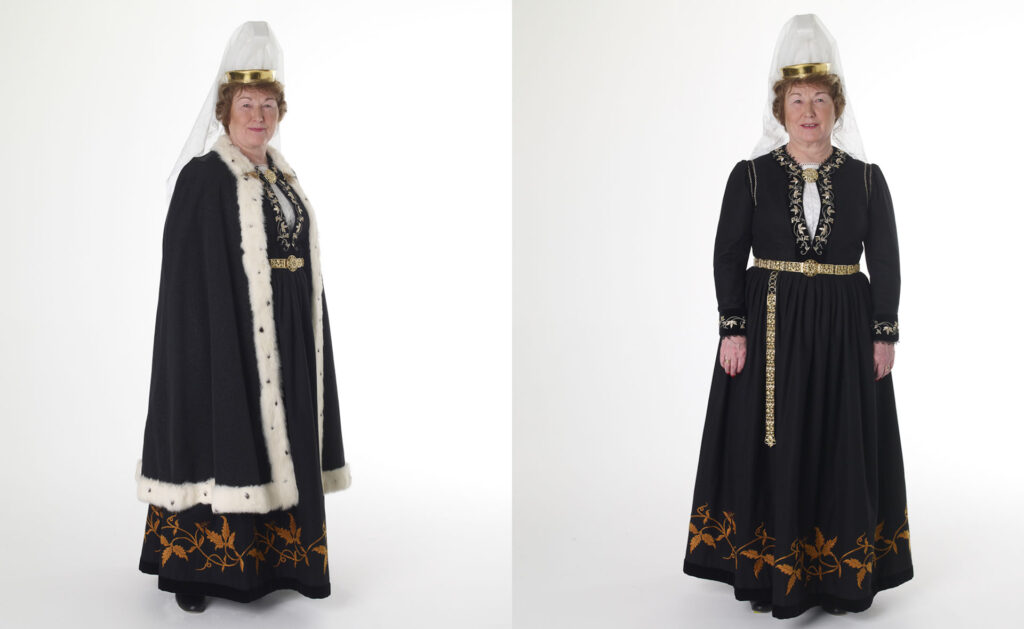
The Skautbúningur is made of black woolen fabric and features a waist-length jacket with a snug fit and long, close-fitting sleeves. The skirt was gathered all around, with fuller gathers at the back. Delicate white lace adorned the neckline and cuffs of the jacket. The bottom of the jacket was fastened with a hook while a brooch secured the neckline. The garment exposed the breast area, revealing a white stomacher adorned with lace or embroidery. Wide velvet ribbons embellished with gold or silver-thread embroidery adorned the plackets, neckline, and cuffs.
The skirt boasted a deep floral embroidery border, often featuring consistent motifs. The hem of the skirt was finished with black velvet trim. Completing the ensemble was a tall white faldur headdress, complemented by a gilt fillet and a veil. A linked belt, often accompanied by a pendant, encircled the waist while a brooch graced the neck. The sleeves featured buttoned cuffs. Women paired this attire with black stockings and shoes, completing the skautbúningur national costume.
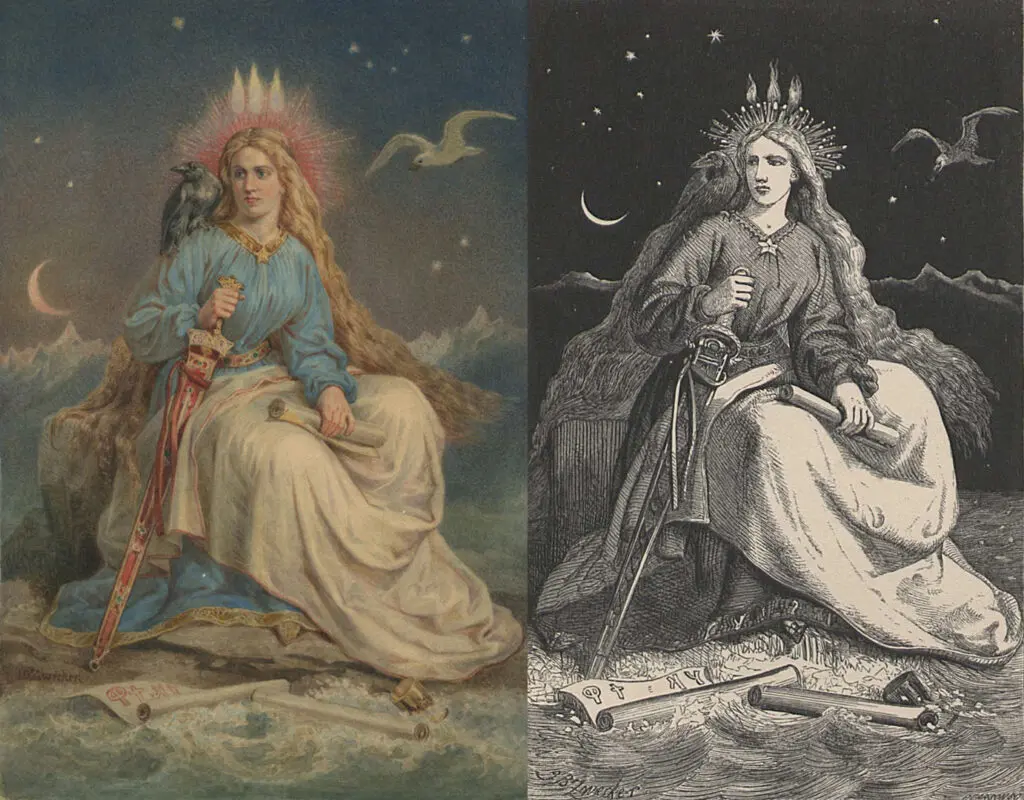
The Fjallkona – Lady of the Mountain – chosen each year to represent Iceland on June 17, the National Day, dresses in skautbúningur.
Kyrtill – Popular for Confirmations
Sigurður designed the kyrtill in 1870, and it gained popularity for confirmations and weddings around 1900. It embodied simplicity and lightness, crafted from silk, satin, cotton, thin woolen fabric, and occasionally velvet. Originally intended to be white, the kirtle gradually expanded its palette to include darker hues like blue, green, and black.
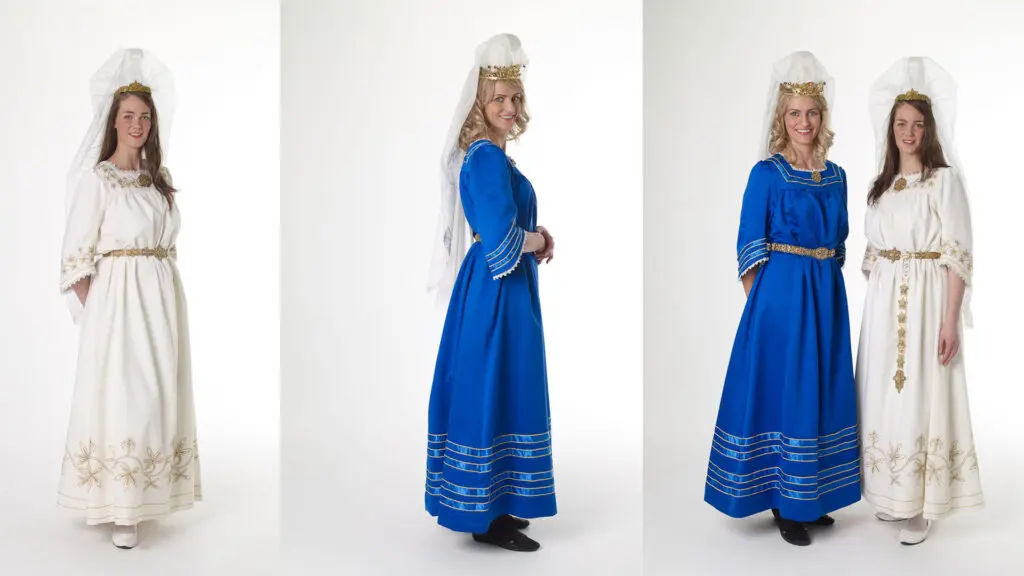
The kirtle featured gathering beneath the yoke at the front and back, boasting a square neckline and wide half-length sleeves. Delicate lace adorned the neckline and sleeves, while decorative trim or embroidery designed by Sigurður himself adorned the yoke, sleeves, and hem, drawing inspiration from Icelandic flora and traditional motifs.
When worn, the kirtle was accompanied by the same headdress as the skautbúningur: a tall curved faldur, a veil, and a bow, with a gilt fillet. A silver brooch adorned the neckline of the kirtle, while a belt made of metal links completed the ensemble. The shoe and stocking colors were carefully selected to harmonize with the costume’s overall aesthetic. Light colors were preferred when pairing with a pale-colored kirtle, whereas black was a popular choice otherwise. Sigurður Guðmundsson’s skautbúningur and kyrtill costumes not only revived Icelandic traditions but also represented dedication to preserving the nation’s cultural heritage.
Faldbúningur – 18th and 19th Century Clothes
In the realm of historical depictions, the earliest drawings of Icelandic women showcase the faldbúningur attire. Surviving examples of this costume date back to the 18th century. The name faldbúningur stems from the distinct high headdress known as the faldur. It involved wrapping several white linen cloths around the head and securing them in place with pins. A contrasting-colored scarf adorned the lower part of the headdress. During the 18th century, the faldur took on an elegant curve known as the krókfaldur.
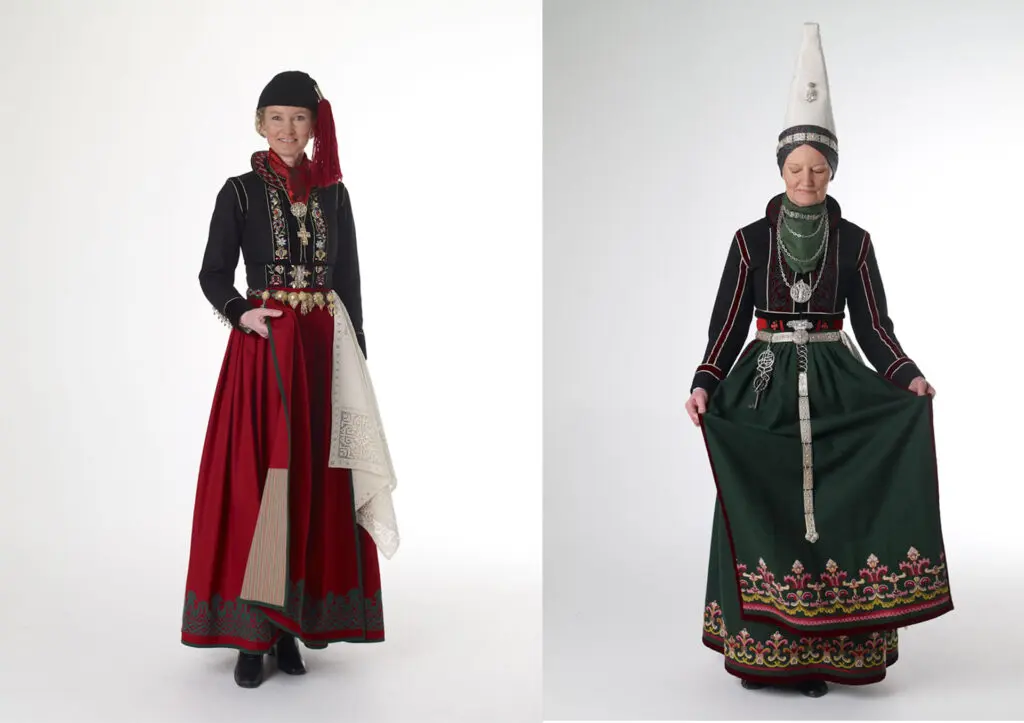
Women would wear a chemise as a foundation garment, topped with a upphlutur or bodice in a contrasting color. The bodice was often made of velvet, while the rest of the costume featured woolen cloth. A short black jacket with long, snug-fitting sleeves boasted decorative trim on the back and sleeves. Ribbons of metal thread or velvet, embellished with appliqué or embroidery in silk or metal thread, adorned the plackets.
The separate collar featured matching embellishments. The long skirt, available in blue, green, red, or black hues, was accompanied by a narrow apron of the same length, either matching or contrasting in color. Both garments were adorned with velvet, lace, or embroidered trim at the hem. A brooch secured the scarf in place. The ensemble was completed with a belt and occasionally necklaces. Women often opted for a tasseled cap instead of the faldur headdress for casual wear.
Faldbúningur in the V&A Museum
One of the most beautiful and whole faldbúningur preserved is owned by the V&A Museum in London. Sadly, Icelanders have no claim on that costume, as its provenance shows that it was sold to William Hooker in the early 19th century.
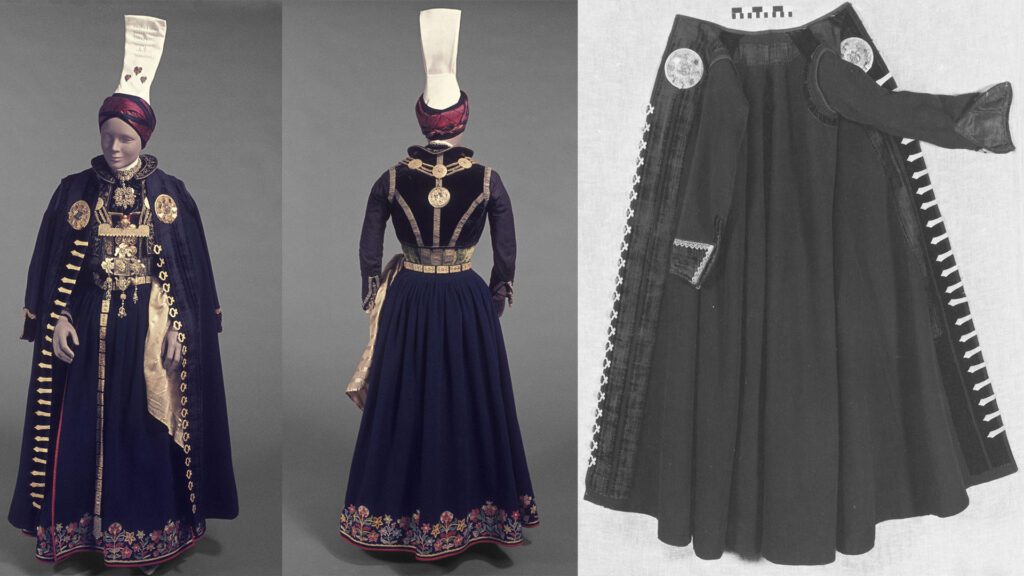
The jewellery that came with the costume is from the 16-18th centuries. The costume is the only known complete faldbúningur to exist.
On the V&A Website, it says: It is possible that parts of the outfit once belonged to Sigríður Magnúsdóttir and were originally worn at her wedding in 1761 and then passed on to her daughters: Þórunn and Ragnheiður Ólafsdóttir, who wore at least part of the costume at their weddings, in 1780 to Bishop Hannes Finnson and sheriff Jónas Scheving in 1804 respectively.
Sigríður Magnúsdóttir was the wife of Ólafur Stephensen, the first Icelandic governor and friend of Skúli Magnússon, the father of Reykjavík. Their son Magnús Stephensen was the chief judge and one of the most prolific messengers of the Enlightenment in Iceland.
19th Century Faldbúningur
As the 19th century dawned, national costumes took on a simpler form. The faldbúningur was now paired with a spaðafaldur, where the once high and curved headdress was flattened into a spatula-like shape, wider at the front and tapering towards the back where it was secured to a small linen or knitted cap. The spatula portion, crafted from white linen, was pinned over a card or wire. A contrasting silk scarf was elegantly wrapped around the cap and the lower part of the faldur. In terms of the upper part of the costume, little changed.
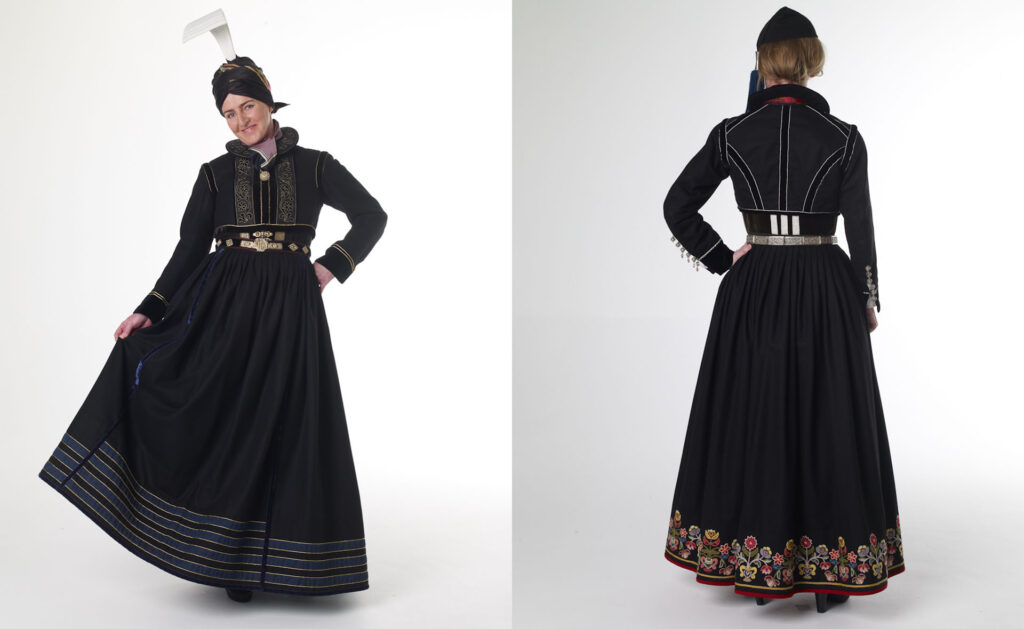
Women continued to wear a chemise and a colored upphlutur, accompanied by a short black jacket adorned with facings, ribbons, and long, well-fitted sleeves. The separate collar remained a staple. The skirt, called samfella, was either black or dark blue. It incorporated the “apron” directly into its design, featuring piping at the seam. Velvet trim, lace, or embroidery adorned the skirt’s hem, with the deepest border accentuating the “apron” section. A silk scarf was secured with a brooch, while a belt and necklaces complemented the ensemble. Throughout the 19th century, the tasseled cap gradually gained popularity as an everyday alternative to the faldur headdress.
Upphlutur – 19th and 20th centuries
The upphlutur, although not originally a distinct national costume, played a significant role in women’s attire throughout history. It refers to the tightly fitted bodice, often crafted from colored velvet or woolen fabric, worn over a light-colored chemise made of wool or linen. This front-opening bodice was laced together with eyelets on the plackets, typically five or more on each side, ensuring a snug fit.
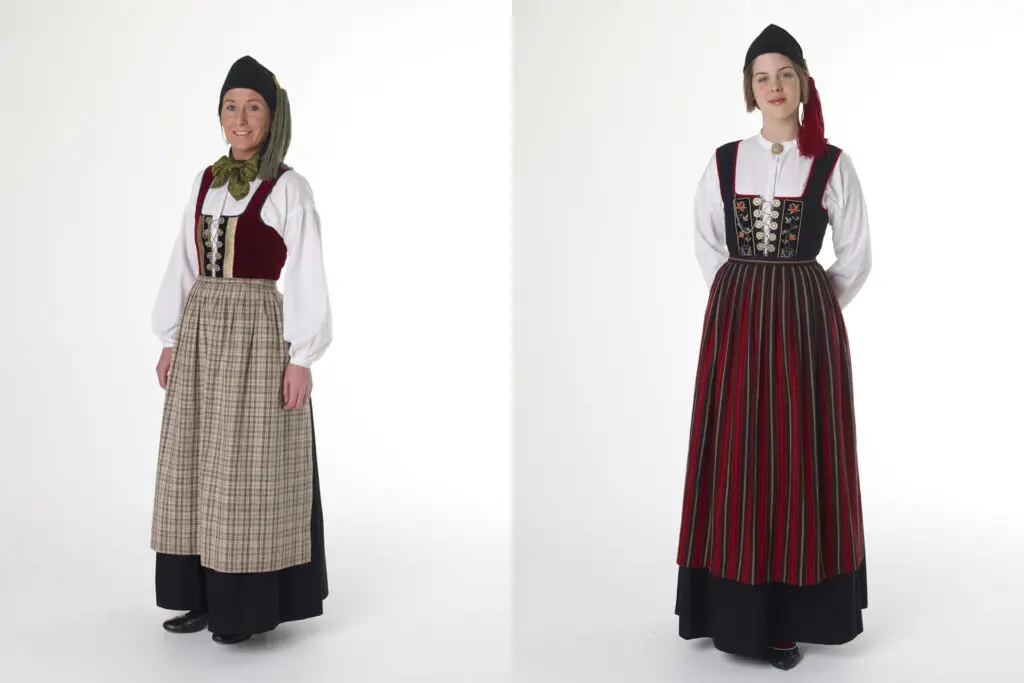
The plackets were adorned with metal thread or velvet ribbons, sometimes embellished with silk or metallic embroidery. The back of the bodice and shoulder seams featured three lengths of velvet or metal-thread trim. A brooch or scarf adorned the neckline. The skirt, fashioned from black or dark-blue woolen cloth, clung tightly at the back and gracefully hung from the bodice. An important part was the woolen or cotton apron, vertically striped or chequered.
Completing the ensemble was a deep cap knitted from fine black woolen yarn, sporting a short woolen tassel, often in a contrasting color. A cylindrical ornament, a metal-thread ribbon or silver, covered the join between the cap and the tassel. In the 19th century, woolen stockings and simple homemade sheep leather shoes were the preferred choices for most women.
20th-century Upphlutur
The upphlutur underwent transformations in response to evolving fashion trends, ideas, and the availability of materials. By the 20th century, the upphlutur had taken on a distinct identity from its predecessor. The skirt, now sewn from black silk satin or similar fabric, harmonized with a bodice made from the same material, invariably in black. The neckline of the bodice was lower, and the number of eyelets was reduced to four sets.
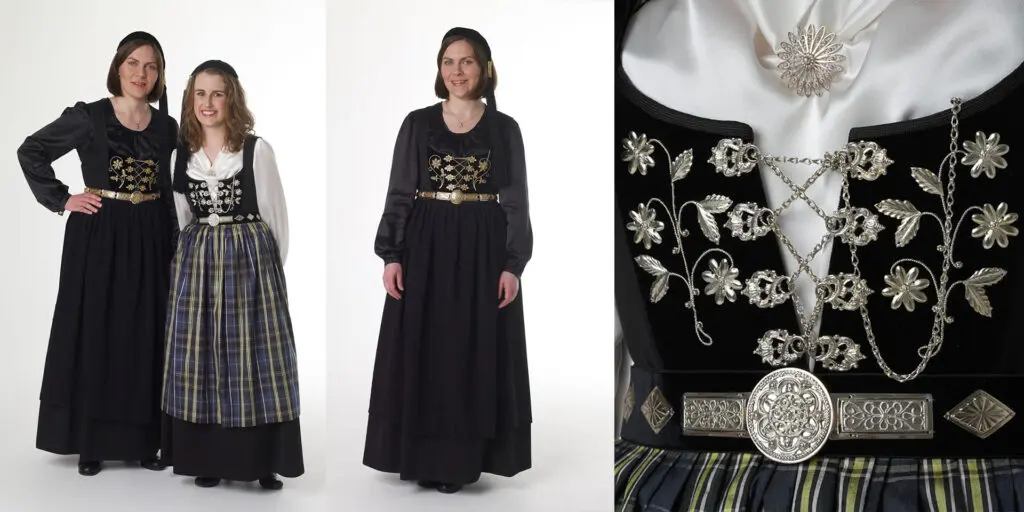
The velvet ribbons on the front of the bodice became wider, embellished with metal-thread embroidery or silver flowers. The narrow trim on the shoulder seams and two trim lengths in the middle of the back remained distinguishing features.
The chemise occasionally featured a lower neckline, and the color palette expanded to include various shades. Fabrics for the chemise and apron became more diverse, with synthetic materials gaining popularity in the mid-20th century. The cap transformed into a shallower design, sewn from velvet and adorned with a long black silk tassel.
A silver brooch adorned the neck, and silver cufflinks became a stylish addition. Belts made of metal links or velvet with silver ornamentation completed the ensemble. Present-day upphlutur costumes are generally sewn from woolen cloth and paired with a light-colored shirt. The apron boasts vertical stripes or checks, while the cap is knitted from fine black woolen yarn but with a shallower profile. Women traditionally wear black stockings and shoes to complete the upphlutur attire.
Peysuföt in the 19th and 20th century
During the 19th century, the peysuföt national costume predominantly featured black or occasionally dark blue colors. The woven woolen cloth skirt was a defining element of this attire. The name “peysuföt” originated from the long-sleeved jacket known as the peysa, which boasted a snug fit and extended sleeves. In the early 1800s, the peysa was commonly knitted from fine woolen yarn and felted. At the same time, the latter half of the century saw it being sewn from woven fabric.
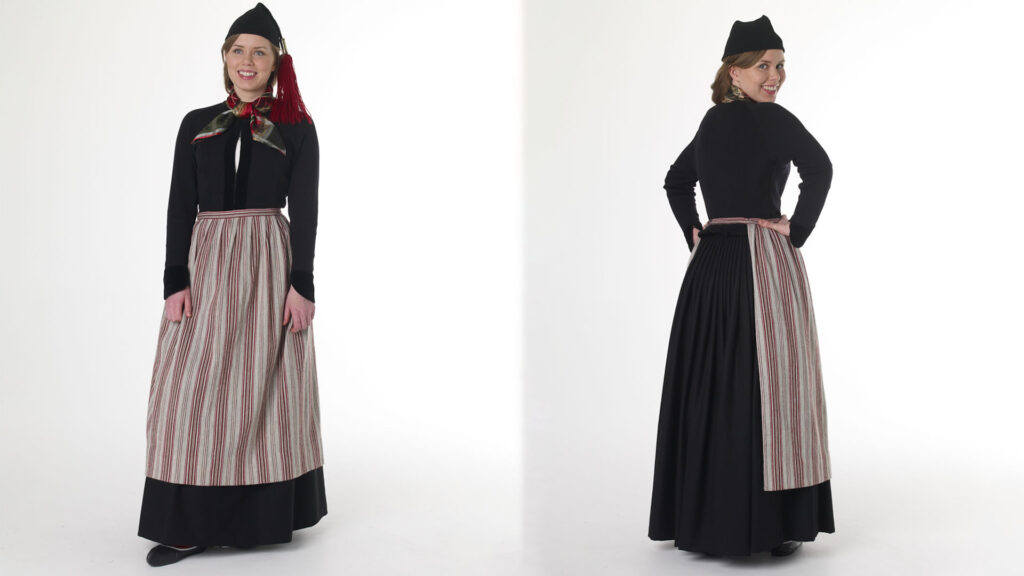
The plackets and cuffs of the jacket were adorned with black velvet, and the front of the peysa was fastened with hooks, leaving a visible opening over the chest where the chemise was exposed. At the lower back of the peysa, there was a strip of matching fabric known as the stokkur or stakkur, which concealed the skirt’s waistband. Due to this distinct feature, some jackets were even referred to as stokkapeysa or stakkpeysa.
A contrasting-colored scarf was worn around the neck, and the apron, made of woolen, cotton, or occasionally silk fabric, showcased vertical stripes or checkered patterns. Completing the ensemble was a deep knitted cap in fine black woolen yarn, accompanied by a tassel in red, green, blue, or black. A cylindrical ornament made of metal-thread ribbon or silver concealed the joint between the cap and the tassel. In the 19th century, woolen stockings and simple handmade sheep leather shoes remained the preferred choice for most women.
20th-Century Peysuföt
As times changed and fashion trends evolved, the peysuföt costume underwent significant transformations. In the 20th century, the skirt and jacket shifted back to black. They were sewn from woolen fabric, silk damask, or similar materials. The peysa maintained its fitted style, featuring the stakkur at the back. The plackets and cuffs received velvet trims, and the sleeves acquired a slight puffiness at the shoulders. Underneath the open front of the peysa, a white peysubrjóst or stomacher, adorned with lace or embroidery, became visible.
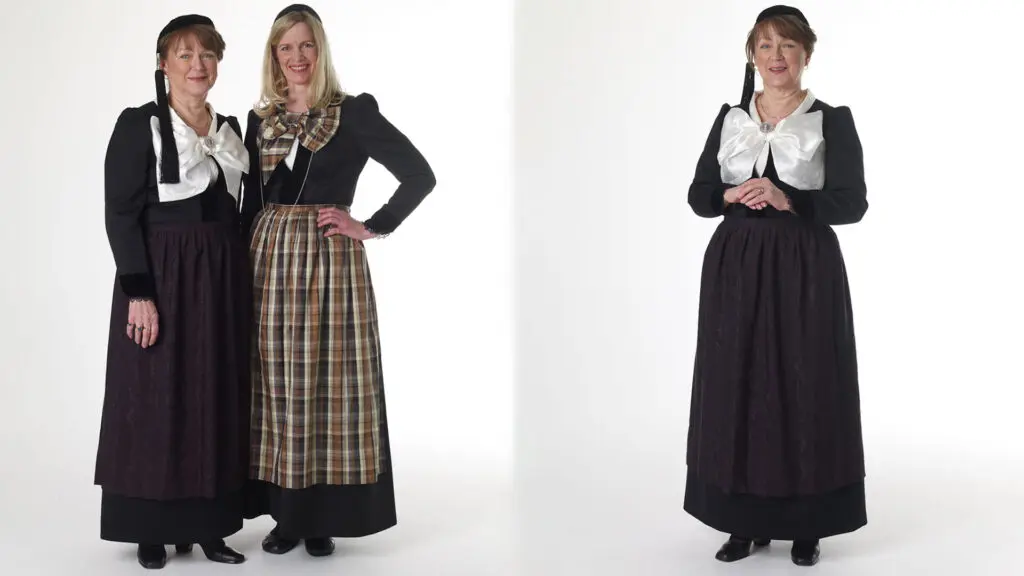
A silk tie known as slifsi was worn around the neck, tied in a bow. The slifsi and apron are often matched in silk fabric, plain or multicolored. A shallow cap sewn from velvet and a long black silk tassel replaced the deeper cap style. In the mid-20th century, colorful synthetic fabric found its way into the slifsi and apron.
The peysuföt costume is commonly sewn from woolen fabric, featuring a silk slifsi. The apron exhibits vertical stripes or checkered patterns, and a shallow cap knitted from fine woolen yarn adds the final touch. Black stockings and shoes complement the peysuföt attire.
Men’s National Costume
Men’s attire during the 18th and 19th centuries commonly featured garments crafted from homespun woolen cloth in shades of dark blue, black, or brown. An undershirt was tucked into knee-length breeches with a fall-front or codpiece fastened to the waistband with buttons. The cuffs of the breeches were also buttoned. Braces, typically tablet-woven, were crossed at the front and back to hold up the breeches.
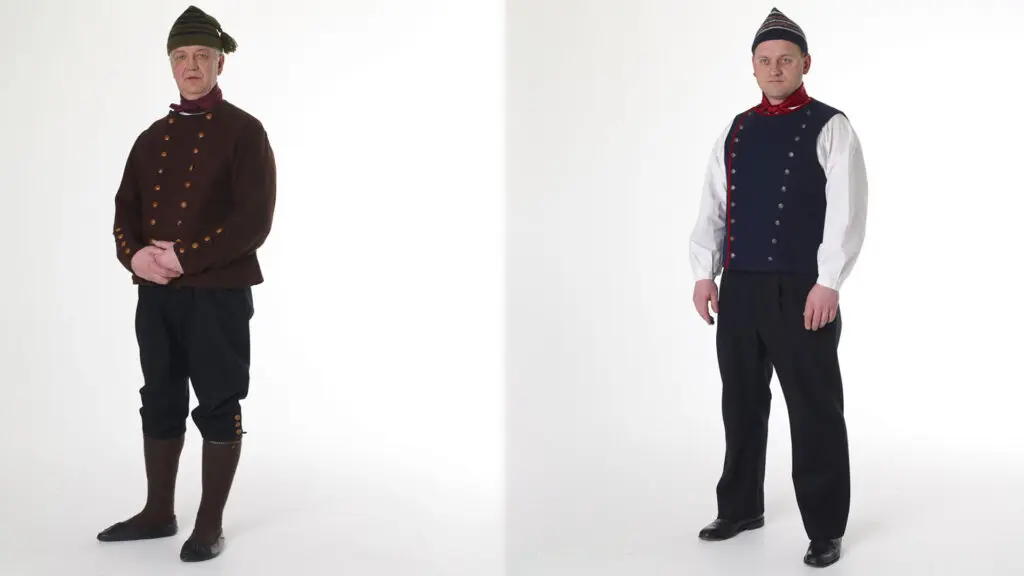
Waistcoats, originally knitted and later sewn from dark or colored woolen fabric, had a high neckline and extended below the waist. They were double-breasted and could be buttoned in either direction. The neckline, armholes, and plackets were adorned with woolen facings. A simpler version of the waistcoat, known as a brjóstadúkur, had buttons on the left side and shoulder, with an external pocket.
The collarless jacket boasted curved sleeves and buttoned cuffs. Its wide, double-breasted front could be buttoned in various ways, employing tin, pewter, bone, or silver buttons. Men also wore a neckerchief and a striped knitted woolen cap, complete with a short tassel. Their long knitted woolen socks were held up by garters positioned below the knee. Simple, homemade shoes made from sheep leather or fish skin completed their footwear.
Modern National Costumes
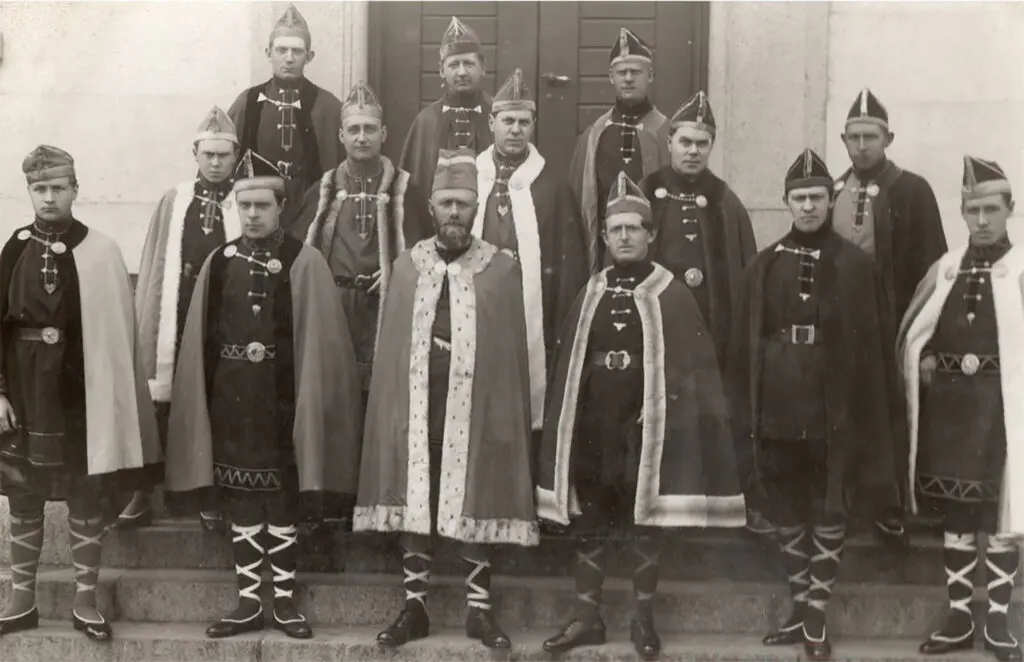
For the 1000-year anniversary of the Icelandic Alþingi in 1930, a huge celebration was planned at Þingvellir National Park. Illustrator and artist Tryggvi Magnússon decided to design a new set of Icelandic national costumes for men, so-called “litklæði” or colorful clothes. They were based on the clothes the people of the settlement wore and were in keeping with the growing nationalism at the time – after all, Iceland wasn’t still a republic. It had become the Kingdom of Iceland in 1918.
Then in the 1990s, a new version was created, which was basically a suit. The Festival costume, created to celebrate the 50th anniversary of the Icelandic Republic in 1994, is not as highly regarded as it is believed to be more similar to Faroese national clothing than Icelandic. Nevertheless, it remains a somewhat popular attire.
Outerwear
Throughout history, Iceland’s cold climate has dictated how its inhabitants dress. The overcoat has played a vital role in their attire, adapting to changing fashion trends. Knitting is believed to have been mastered by Icelanders during the 15th and 16th centuries, with knitted woolen shawls becoming the favored outerwear.
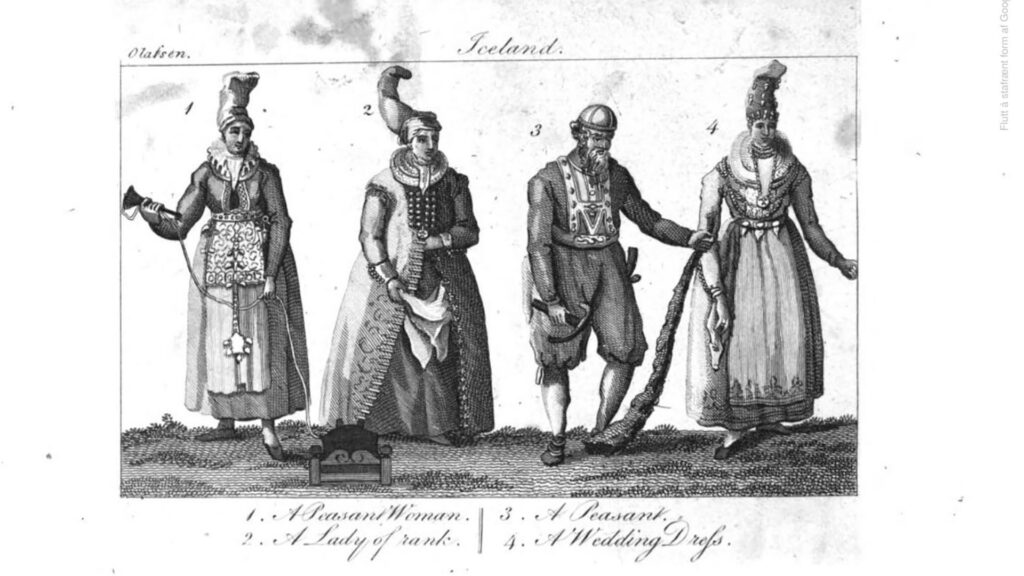
In the era of the faldbúningur, women’s overcoats were known as hempa, resembling priests’ robes. However, in the 19th century, a new style emerged—the möttull or cloak—designed by Sigurður, the painter. It swiftly gained popularity among women. Sigurður based the möttull on the cloaks worn by women during the settlement era (9th-11th century). The National Museum preserves the oldest surviving möttull from 1860, which pairs with a skautbúningur from the same period.
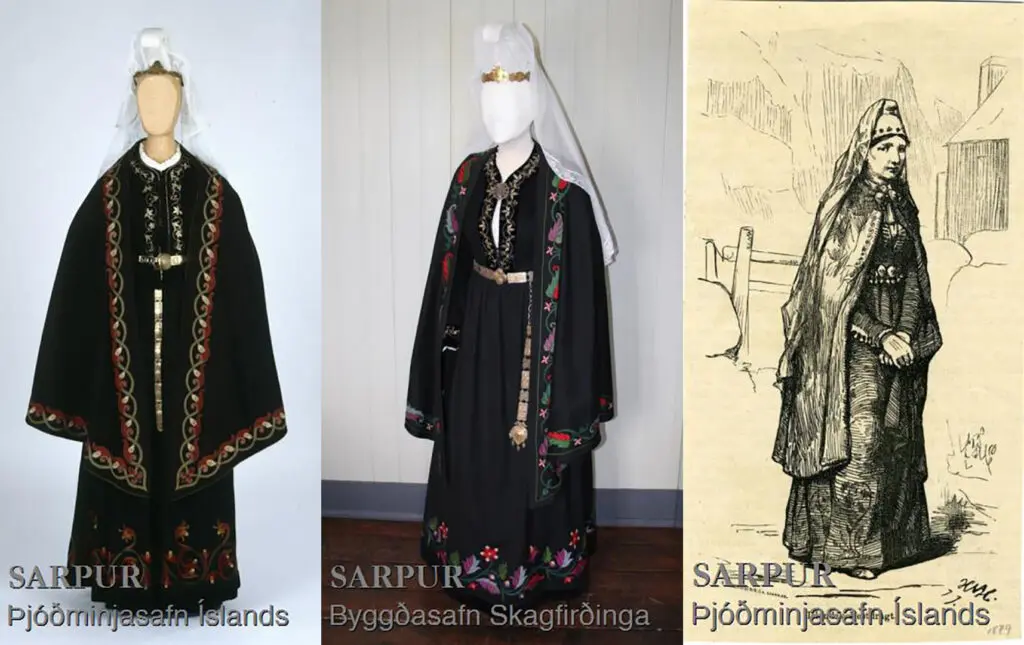
Sigurður’s design for the cloak resembled a shawl, devoid of shoulder seams but featuring a couple of shoulder and neck darts. It was short, reaching only mid-thigh, with sharp corners at the front. Fastened with ties, the möttull became an essential element of the ensemble.
Over time, the möttull developed into two distinct variations: a shorter version known as the “mattelía” and a longer one, extending to the same length as the skautbúningur. Women started wearing the möttull with all their national costumes.
20th-century möttull
In the 20th century, the möttull became the primary outer garment. It acquired a snug fit around the shoulders, gradually flaring towards the bottom, and fastened with an elegant silver or gold filigree clasp. While möttulls are often crafted from colored velvet, silk, or patterned fabrics, they have traditionally been made using silk-satin or fine woolen materials. Colorful linings are commonly incorporated into their construction.
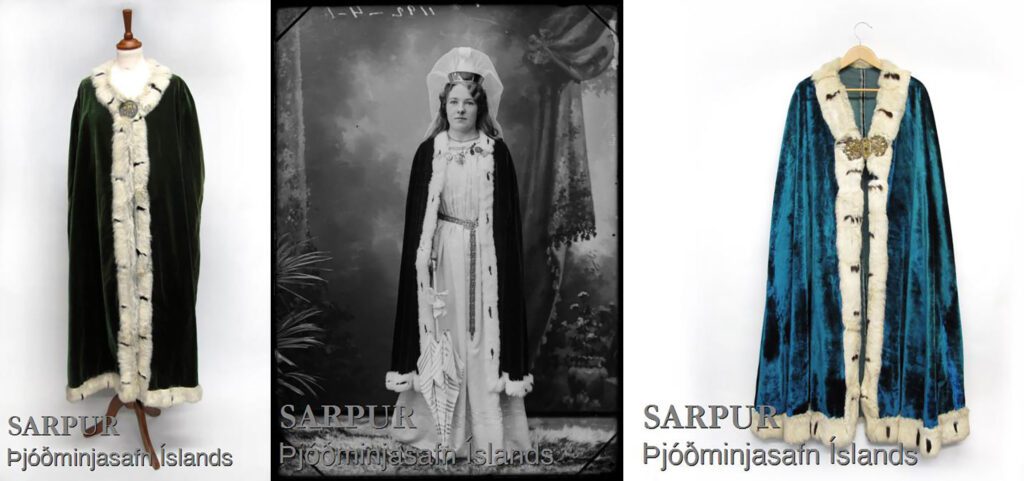
Fur trim typically adorns the cloak’s edges, ranging from white with black dots resembling ermine to dark brown or black fur sourced from mink, fox, or rabbit. In contemporary times, individuals often opt for a velvet edge for their cloaks.

